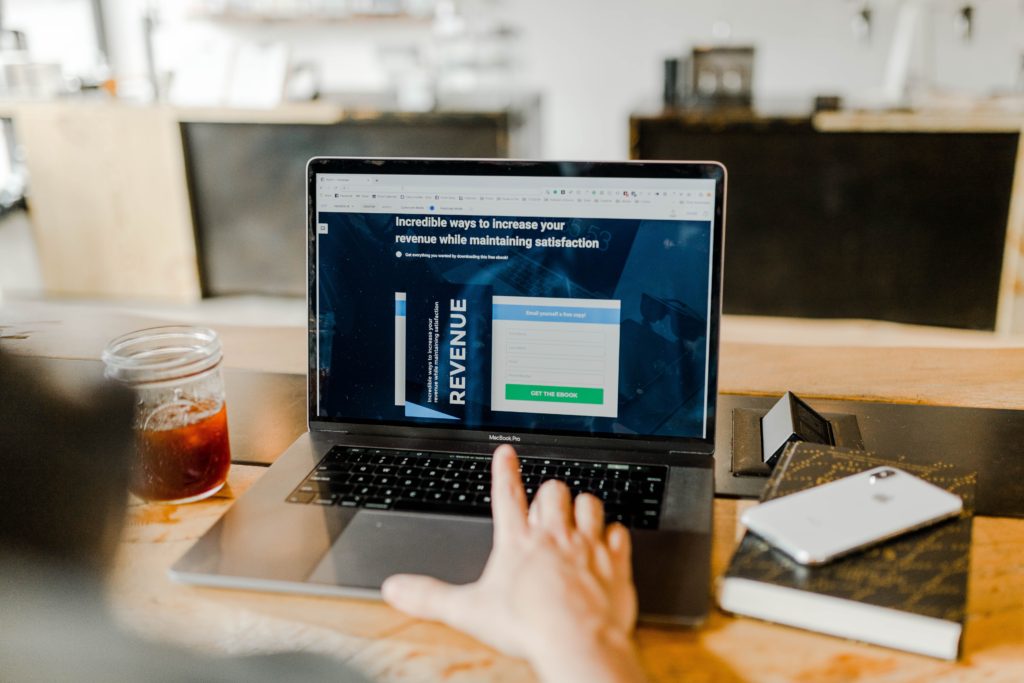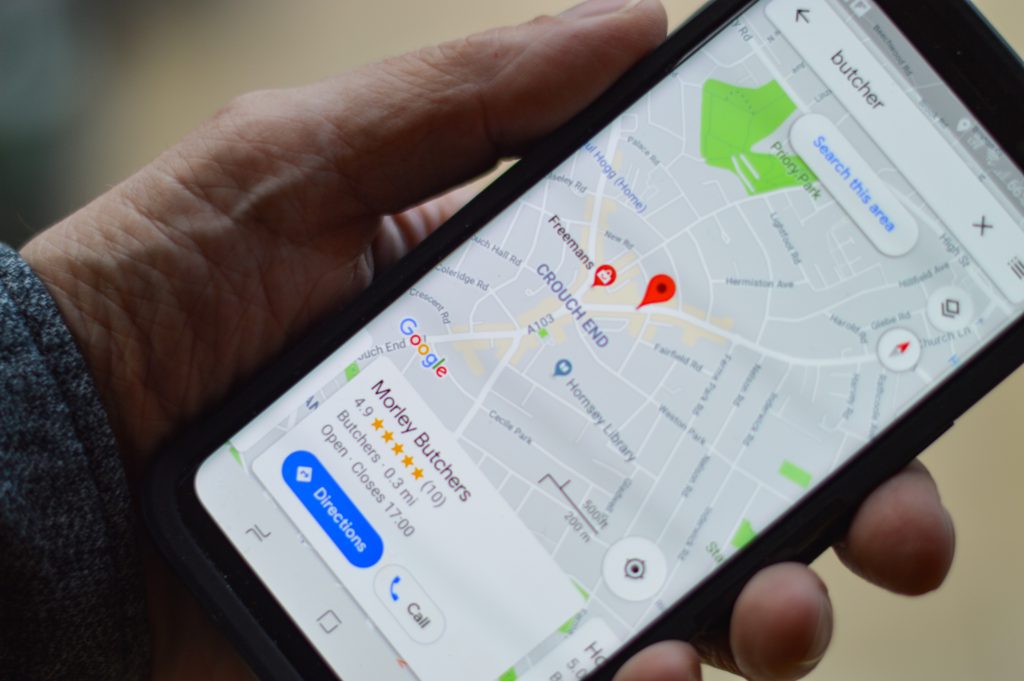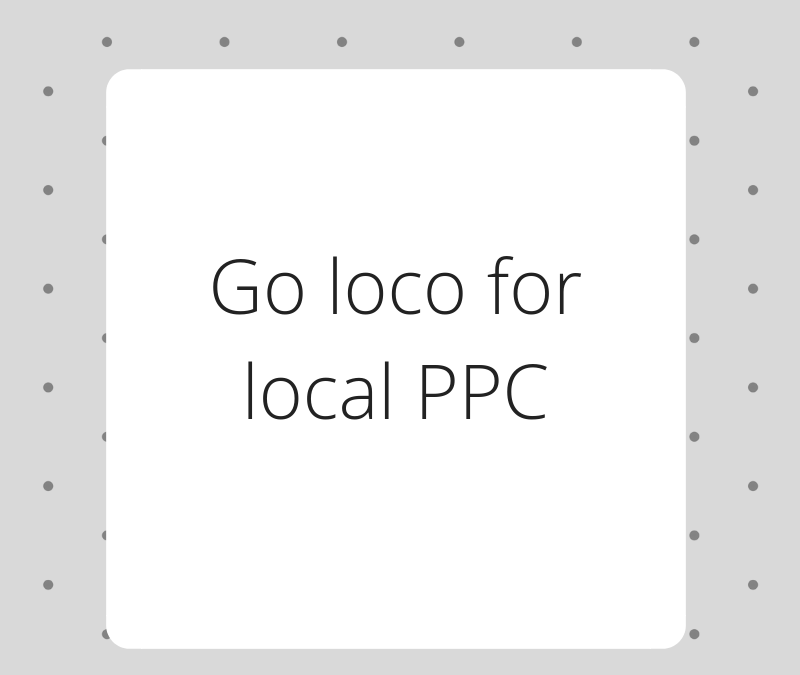We can take advantage of geography to better promote local businesses through PPC.
Let’s say I have a client that has a chain of stores. It’s the same company, but each branch has a different manager, goals, and customers.
How do I tailor a PPC campaign to each store’s independent goals?
It’s easy: local PPC.
With local PPC, we can use hyper-local targeting in Google Ads to focus on specific users. The goal is to improve the context of a PPC search for improved return on ad spend (ROAS).
Your client’s industry, product, or location doesn’t matter—once you dial in a local PPC strategy, you can apply the same principles across the board.
The real value of local PPC
Not sold on the value of local PPC? Consider this: I’ve seen many, many businesses decrease their PPC costs with a local strategy. And that’s without sacrificing any campaign quality. Actually, the quality of a campaign increases with a local strategy because it’s more relevant.
But there’s one thing about local PPC: it won’t work for every campaign. For example, you can’t do a PPC campaign if your client wants to focus on eCommerce. Sorry Jack, but you need a physical location to make this strategy work. Your client has to be offering value to customers at a physical location to get the most of a local PPC strategy.
If you’re trying to boost business for a local brick and mortar client, local PC has a lot to offer.
- Increase campaign relevance: With local PPC, you’re only targeting people who are searching for a keyword in a relatively small geographic area. This changes your campaign targeting and language, but for the better. You’ll see fewer users overall, but that’s because your strategy is so specific. That means you can tailor campaigns to user needs instead of taking a shotgun approach.
- Decrease PPC costs: Marketers live and die by ROI. With local PPC, you only pay for clicks that are local to your area. This increases the chance you’ll find interested users and decrease irrelevant clicks. Translation: no more wasted money.
- Get better results: Thanks to improved relevance and decreased costs, you can see significant ROAS with a local strategy.
If your brick and mortar client wants to have better ads, slash costs, and score more conversions, you need to use local PPC.

The not-so-hidden trade secrets of local PPC
Local PPC isn’t for small mom and pop shops. You can easily replicate these results for a large, multinational company with locations across the world. It just requires a little more elbow grease because you’re targeting more locations.
Follow these three cardinal rules for local PPC to set up a quality campaign, every time.
1. Know the client’s goals
Every company is unique. As a marketer, you have to balance how each location has a different audience. I mean, just because it’s the same company doesn’t mean the stores are identical.
For example, let’s say I have a client that’s a national retailer. They have thousands of stores nationwide. At first blush, I might be tempted to say their goal is to get more foot traffic.
But after talking to them, I realize that’s not their goal at all. Maybe they want to do a big push with their eCommerce business. After the consult, I know that a local PPC strategy won’t work for them since they want to push eCommerce.
This is why it’s so important to understand client goals before you dive headfirst into a local PPC strategy. We can’t assume anything about our clients.
2. Optimize according to best practices
You never know what you’re going to find in your client’s Google Ads account. It’s likely that you’ll find their campaign settings are off, or even their website is a clunky mess.
Don’t dive into local PPC without fixing these things first. Yes, it means a bigger, more expensive contract, but you’re doing the client a disservice if you don’t improve these things first. A local PPC strategy performs best when other parts of the machine run smoothly.
Best practices are best practices for a reason. If you want to get the most out of a client’s budget, see how their marketing works as a whole. You can identify issues, fix them, and have the perfect backdrop for your PPC campaign.
In plain English, this means you’ll spend less money to get higher-quality conversions.
Sounds dreamy, right? Here’s what you can optimize:
- Long-tail keywords: This is important for all campaigns, but especially for local searches. You can’t target short-tail searches for local PPC because they’re way too broad. That would bring in too much irrelevant traffic. With long-tail, you have less competition and lower costs. Plus, you target only the users you want in the first place.
- A/B test your components: Run experiments like a scientist. A/B test every component of your Google Ads campaign, including your landing pages. Remember to do one change at a time so you know what actually worked.
- Improve the website, please: Your client’s landing pages have to have amazing UX and UI. You don’t want to spend $10,000 only to discover local users hate the site.
- Target both desktop and mobile: Yes, most of your clicks probably do come from mobile devices right now. Especially for local searches. But that doesn’t mean you should neglect desktop, either. Embrace responsive design and always watch how your design interacts with different screen sizes.

3. Implement geotargeting
Let’s say your client has a bakery in Salt Lake City. You wouldn’t target the entire state to get more foot traffic to this bakery. Don’t show ads to someone who’s 200 miles away. Leverage geotargeting instead. Here’s how you can do it.
1. Local PPC demographics
Use Analytics to see where people access your client’s website. This will give you an idea of which geography to target (or not target). It’s even better if you can require a login to use your site because that gives you a more well-rounded view of the data.
2. Geotargeting
Google Ads can show your ads to customers only within a certain location. This is perfect for retailers that are looking for more foot traffic. Google offers radius targeting and ZIP code targeting to home in on your ideal customers.
You can also prevent Google from showing your ads in certain geographies, too. It’s sort of like negative keywords, but for geography. This feature lets you choose where you don’t want to show ads.
3. Smart campaign structure
Always watch how you structure campaigns in Google Ads. It matters!
To make it easier to work in the dashboard, always put the target location’s name at the beginning of your Ad Group name. The reporting will be easier this way. And when it’s easier to run reports, it’s easier to see what’s working.
4. Ad copy
Try to add the location’s name in your ad’s title, or at least somewhere in the copy. The more specific and relevant you can be, the better.
And don’t forget to enable ad extensions. Call extensions, in particular, are great if your client needs to book appointments.

5. Local PPC keywords
We touched on this earlier, but local PPC keywords are different than standard keywords.
Consider adding neighborhood names to your keywords. There’s less competition and it will appeal to users way more than a generic ad.
Don’t forget about voice search keywords, too. These colloquial, conversational searches are different but can bring in a lot more business.
Local PPC is great because it helps you stop wasting the client’s budget on irrelevant clicks. There’s a much higher chance that the person seeing your ad actually wants to buy. If you have a client with a limited budget who needs amazing results, local PPC is a good bet.
Be a local yokel
PPC requires a lot of work. But we can still do more to get value for our clients. Use a local PPC strategy to find new customers and grow your client’s business, not only right now, but for the long haul.
For local PPC, the name of the game is relevance and context. Get a little loco for local PPC to see the ROAS trickle in.

